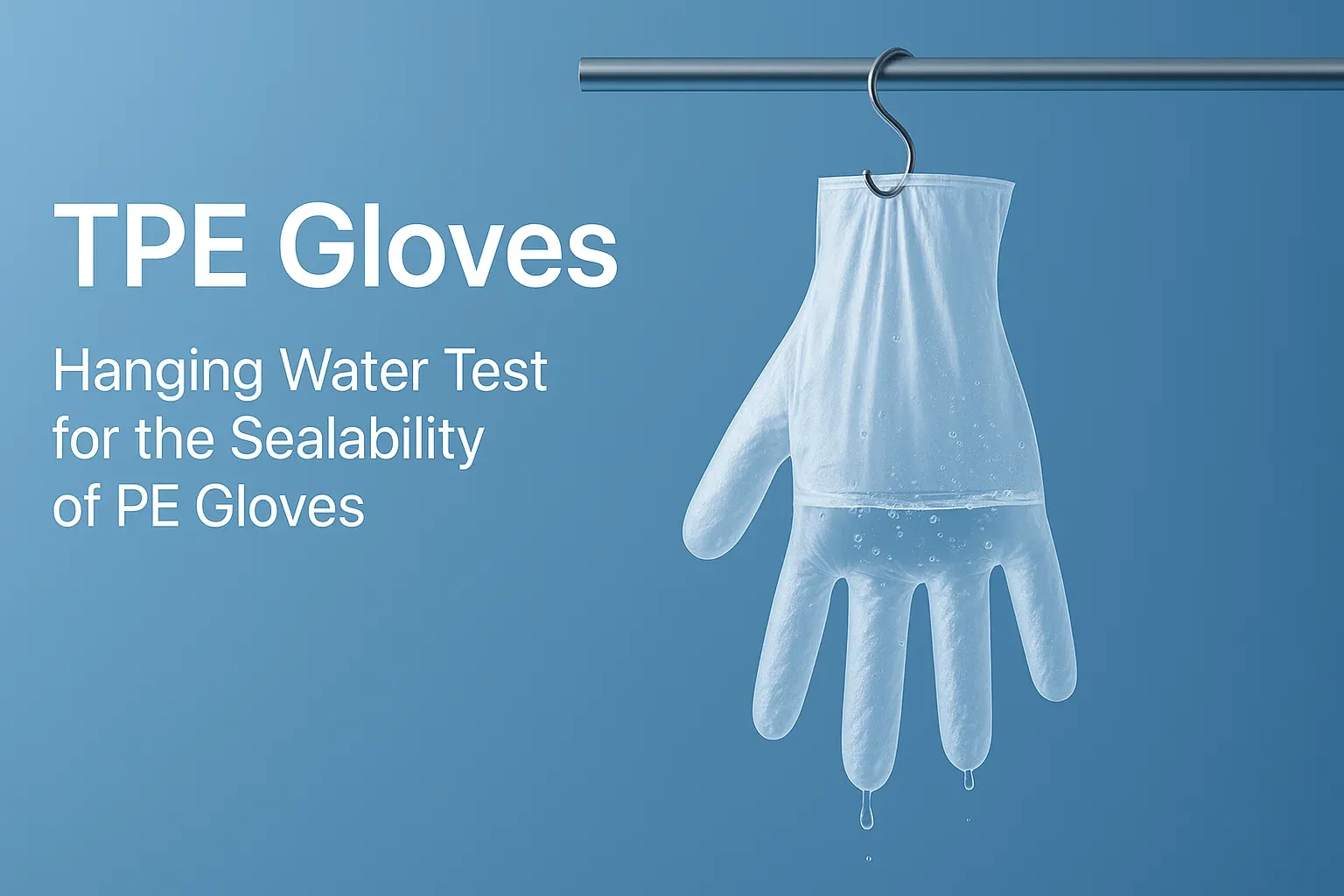Test dell'acqua sospesa per guanti in TPE: Una guida per garantire la tenuta
Il test dell'acqua sospesa: Assicurarsi che i guanti in TPE siano all'altezza della situazione
Scoprite un metodo semplice ma fondamentale per verificare l'integrità e la tenuta dei vostri guanti in elastomero termoplastico (TPE). La tranquillità è a portata di mano.
Cosa sono esattamente i guanti in TPE?
Prima di immergerci nel test, parliamo dei guanti in TPE. I guanti in elastomero termoplastico sono una fantastica alternativa ai tradizionali guanti in vinile o lattice. Sono noti per le loro caratteristiche:
- Comfort e flessibilità: Offre una vestibilità morbida e aderente che si muove con voi.
- Durata: Sorprendentemente resistente per una protezione leggera.
- Sicurezza alimentare: Spesso vengono preferiti per la manipolazione degli alimenti grazie alla loro natura atossica e inodore.
- Ecocompatibilità: Generalmente più attenti all'ambiente rispetto ad alcune alternative.
Siete interessati a guanti in TPE di alta qualità? Date un'occhiata ai nostri Guanti ibridi in TPE resistenti, flessibili e confortevoli.
Perché la sigillatura dei guanti non è negoziabile
Che si tratti di ristorazione, sanità, pulizie o di qualsiasi altro settore che richieda la protezione delle mani, l'integrità dei guanti è fondamentale. Un minuscolo e invisibile foro può compromettere la sicurezza, causando:
- Contaminazione incrociata
- Esposizione a sostanze nocive
- Riduzione della fiducia e della protezione degli utenti
È qui che entra in gioco il test dell'acqua sospesa: un semplice controllo di qualità.
Il test dell'acqua sospesa: Una guida passo passo
Il test dell'acqua sospesa, noto anche come test delle perdite d'acqua, è un metodo di ispezione visiva utilizzato per individuare fori di spillo o altri difetti nei guanti monouso. È semplice, efficace e può essere eseguito praticamente ovunque.
Cosa vi serve:
- Il guanto o i guanti TPE da testare.
- Acqua (circa 1 litro o abbastanza da riempire sostanzialmente il guanto).
- Un modo per appendere il guanto (ad esempio, un fermaglio, una molletta o semplicemente tenendolo in mano).
- Uno sfondo o una superficie contrastante (facoltativo, ma aiuta a individuare le perdite).
- Un timer (opzionale, per i test standardizzati).
La procedura:
- Ispezione del guanto: Prima di riempire il guanto, è necessario effettuare un rapido controllo visivo per verificare che non vi siano strappi o danni evidenti.
- Riempire con acqua: Aprire con cautela il polsino del guanto e riempirlo d'acqua, in genere fino al polso o leggermente sotto la linea del polsino. Evitare il riempimento eccessivo, che potrebbe causare la fuoriuscita dell'acqua dalla parte superiore.
- Fissare il bracciale: Chiudere il polsino del guanto e tenerlo fermo, oppure utilizzare una clip per sigillarlo. In questo modo si impedisce all'acqua di fuoriuscire dall'apertura.
- Appendere o trattenere: Sospendete il guanto pieno d'acqua con le dita rivolte verso il basso. Potete appenderlo sopra un lavandino o una superficie che possa tollerare eventuali gocciolamenti.
- Osservare: Esaminare attentamente l'intera superficie del guanto per individuare eventuali segni di perdite. Cercare:
- Acqua che gocciola.
- Getti d'acqua o getti d'acqua.
- Infiltrazione lenta o formazione di perle d'acqua sulla superficie del guanto.
- Periodo di attesa: La prassi standard prevede spesso l'osservazione del guanto per un periodo di tempo prestabilito, in genere da 1 a 2 minuti, per consentire l'individuazione anche di minuscoli fori di spillo.
Interpretare i risultati:
- Passo: Se non si osservano perdite d'acqua dopo il tempo stabilito, il guanto supera il test di tenuta.
- Non funzionante: Se viene rilevata una perdita d'acqua, il guanto non supera il test e deve essere scartato. Ciò indica una violazione della sua barriera protettiva.
Vedere il test in azione
A volte, vedere per credere. Guardate questo breve video per capire come viene eseguito il test dell'acqua sospesa:
Vantaggi di questo test semplice ma efficace
- Sicurezza migliorata: Assicura che i guanti forniscano la protezione barriera che ci si aspetta.
- Garanzia di qualità: Aiuta a verificare la qualità di un lotto di guanti.
- Efficiente dal punto di vista dei costi: Previene gli sprechi e i potenziali problemi derivanti da guanti difettosi.
- Costruisce la fiducia: Sapere che l'attrezzatura di protezione è affidabile.
Scegliere con cura i guanti in TPE
Sebbene il test dell'acqua sospesa sia un ottimo controllo, la scelta di guanti di un fornitore affidabile che aderisce a standard di produzione di qualità (come l'AQL - Acceptable Quality Limit) è la prima linea di difesa. I guanti in TPE, noti per la loro resistenza ed elasticità, in genere si comportano bene in questi test se prodotti correttamente.
L'esecuzione di questo test può fornire una maggiore garanzia, soprattutto quando si inizia con una nuova marca o un nuovo lotto di guanti TPE.
Protezione di cui ci si può fidare.
Il test dell'acqua sospesa è uno strumento prezioso nel vostro arsenale di controllo qualità. Consente di verificare in modo semplice e rapido la tenuta dei guanti in TPE, garantendo la protezione affidabile necessaria per le vostre attività. Grazie alla comprensione e all'utilizzo di questo test, potrete mantenere standard di sicurezza più elevati e lavorare con maggiore fiducia.




